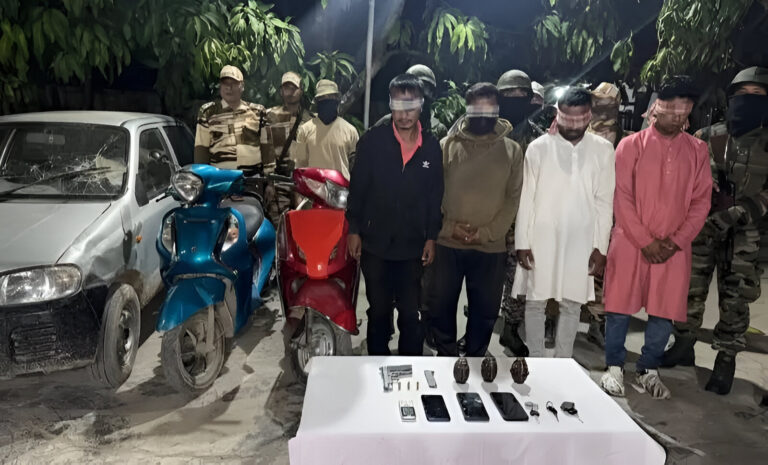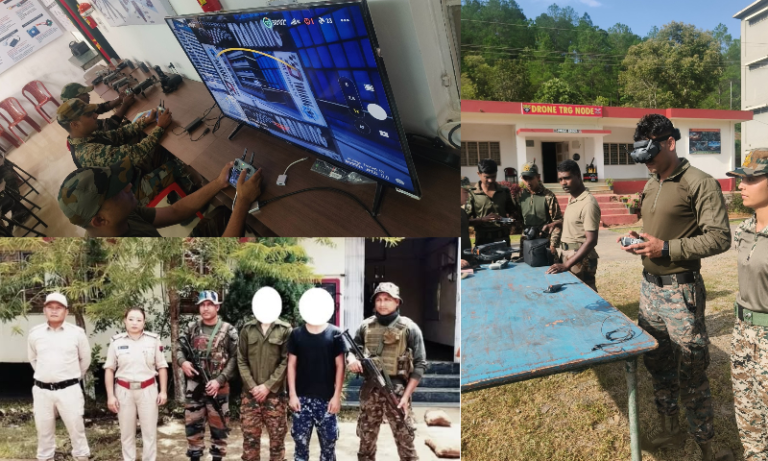Manipur: Rocket Bombs and Improvised Mortars Recovered in Churachandpur
Summary
In a precision-driven anti-insurgency operation on August 6, 2025, the India Reserve Battalion (IRB) swooped into Gothol village under Churachandpur police station, recovering a cache comprising one AK Ghatak rifle with an empty magazine, two improvised mortars (“pumpi”), four improvised rocket bombs, and nineteen mortar rounds. Acting on actionable intelligence, the IRB thwarted militants who fled the scene, later handing over the weapons to local authorities. Despite 111 checkpoints across Manipur, no arrests were made during this mission
Setting the Stage: Why Churachandpur Matters
Have you ever wondered why Churachandpur—often dubbed Lamka—serves as a hotspot in Manipur’s ongoing security challenges? Nestled in the Thangjing Hills’ embrace, this district lies 60 km south of Imphal and sprawls across 4,570 km², bounded by National Highway 2, which links Manipur to Assam, Nagaland, Mizoram, and even Myanmar Picture it as a busy crossroads, not just of commerce and culture, but also, unfortunately, of insurgent supply lines—where contraband, small arms, and improvised explosives find safe passage through rugged terrain.
The IRB in Action: More Than Just Another Checkpoint
Let’s talk about the India Reserve Battalion—think of them as the state’s special forces, the go-to squad when things heat up. Unlike regular police, IRB commandos undergo rigorous counter-insurgency and border-security training, often coordinating with Assam Rifles and Central Armed Police Forces for joint crackdowns On that hazy August morning, IRB’s intel network sparked an alert about suspicious movements in Gothol. Without a moment’s hesitation, they mobilized, setting up a surgical operation rather than a broad dragnet. No wonder the militants bolted—turning tail faster than you can say “pumpi.”
The Discovery: Weapons That Could Rewrite Headlines
When you hear “improvised mortars” or “rocket bombs,” it might bring to mind war zones far from home. But here they are, in a Manipur village. The haul included:
- AK Ghatak Rifle + Empty Magazine
- Two Improvised Mortars (Pumpi)
- Four Improvised Rocket Bombs
- Nineteen Mortar Rounds
Imagine a toolbox of terror—crude yet deadly, cobbled together from metal pipes, old shells, and gasoline. These home-brewed munitions often bypass standard tracing methods, turning locals’ backyards into potential launch sites. It’s like discovering a DIY bomb-making workshop in your neighbor’s garage.
Concluding Thoughts
The Churachandpur operation shines a spotlight on the evolving face of insurgency in Manipur: from jungle hideouts to improvised urban warfare kits. It reminds us that security isn’t just about muscle power—it’s about information, community buy-in, and strategic patience. As long as militants can assemble homemade bombs in backyard workshops, operations like Gothol will remain critical. But sustainable peace demands addressing the socio-economic cracks that fuel the conflict in the first place.
FAQs
1. What exactly are improvised mortars and how are they made?
Improvised mortars (“pumpi”) are homemade artillery devices typically fashioned from metal pipes, sealed at one end, and fired using rudimentary propellants. They vary widely in design, making them hard to trace and more unpredictable than factory-made ordnance.
2. How does the IRB differ from other Indian security forces?
The India Reserve Battalion is a state-level rapid response force specializing in counter-insurgency, border security, and high-risk operations. Unlike regular police, IRB units receive specialized training in commando tactics and often collaborate with central armed police forces for joint missions
3. Why were no militants detained despite 111 checkpoints?
The operation in Gothol was intelligence-led and surgical; checkpoints primarily serve to disrupt movement broadly. Militants, forewarned by the IRB’s swift action, likely slipped away into forested cover, highlighting challenges in balancing broad security measures with targeted interventions
4. What measures are in place to prevent weapons smuggling from Myanmar?
Authorities conduct joint patrols with Burmese counterparts, install electronic surveillance along key border passes, and rely on human intelligence networks. However, rough terrain and local sympathies often complicate total interdiction.
5. Can these recovered weapons be reused if not destroyed?
Standard protocol mandates that seized arms undergo forensic testing before being destroyed in controlled detonations. This prevents reuse and eliminates any risk of them reentering the black market.



